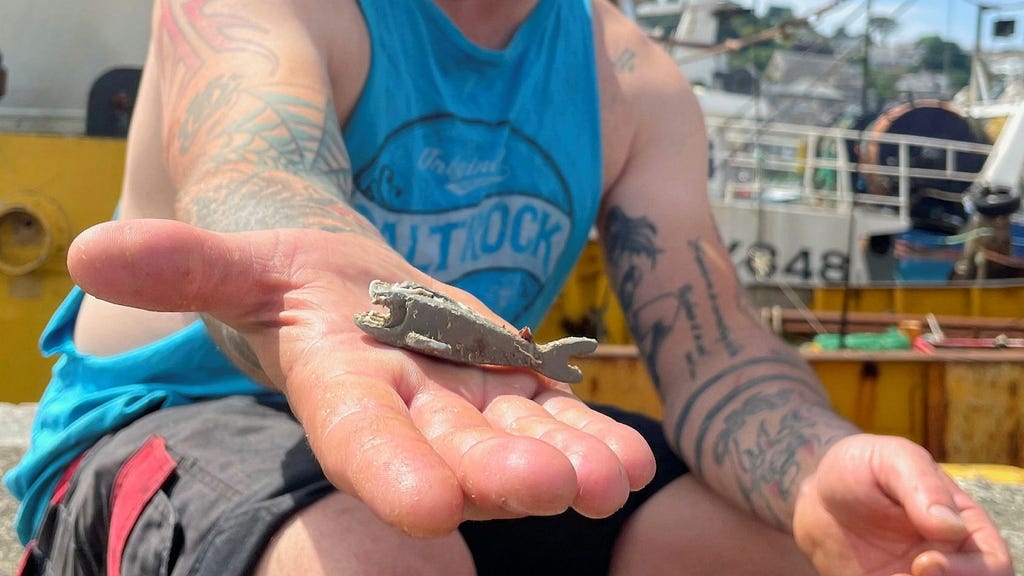On February 13, 1997, a rogue wave struck the container ship Tokio Express in the English Channel, sending cargo overboard, including 4,756,940 LEGO pieces. Ironically, many of the lost LEGO pieces were sea-themed, adding a layer of poignancy to the incident. This event, though seemingly trivial, has become a focal point for understanding the persistence of plastic in the marine environment. Since the spill, LEGO pieces from the Tokio Express have washed ashore on the coasts of England, Wales, Ireland, the Netherlands, and Norway. These small, brightly colored bits of plastic serve as unintended tracers, highlighting the vast distances and unpredictable patterns of ocean currents and the long-lasting nature of plastic pollution.
Tracey Williams founded the organization Lego Lost at Sea to document the discovery of these LEGO pieces and raise awareness about plastic pollution in the oceans. The project is not simply a whimsical scavenger hunt; it is a scientific endeavor, meticulously tracking the location and condition of recovered LEGO pieces to understand how plastic debris moves through the marine environment. The data collected provides valuable insights into what types of plastic sink or float, how far they travel on the surface or along the seabed, and the rate of degradation, or lack thereof, over time. By mapping the distribution of these LEGO pieces, Williams hopes to educate the public about the scale of plastic pollution and its potential impact on marine ecosystems.
Among the most commonly found items are LEGO divers’ air tanks and small flippers, likely due to their buoyancy. However, rarer pieces also surface occasionally, reminding us of the sheer diversity of the lost cargo. During the summer of a recent year, a significant discovery was made by Richard West, a 35-year-old fisherman from Plymouth. He found a rare grey LEGO shark entangled in his fishing net. West recognized the shark from a LEGO pirate ship set he had owned as a child, highlighting the enduring appeal and recognizability of these toys. He described the find as ”priceless,” a sentiment echoing the value these small plastic pieces have acquired as markers of a larger environmental issue.
The discovery of the grey shark prompted further investigation. According to an inventory of the lost LEGO cargo, 22,000 dark grey sharks and 29,600 light grey sharks were on board the Tokio Express. The relative scarcity of recovered sharks is likely due to their tendency to sink, according to Williams. She estimates that over 50,000 of these sharks may still reside on the seabed, slowly making their way into deeper waters or occasionally washing ashore. The sharks, along with other sunken LEGO pieces, offer a sobering reminder of the vast, unseen accumulation of plastic debris on the ocean floor.
The story of the lost LEGOs has captured the imagination of many, including 14-year-old Liutauras from Penzance, Cornwall. He has collected over 800 LEGO pieces washed ashore, driven by the hope of finding a particularly rare black dragon. His persistence was rewarded when he discovered not one, but two of these elusive dragons. The inventory reveals that 33,427 black dragons were lost in the spill, making them a coveted find for collectors and a significant data point for Lego Lost at Sea. Liutauras’s story exemplifies the citizen science aspect of the project, where individuals contribute to a larger understanding of the issue.
While many pieces have been recovered, some remain elusive. Tracey Williams notes that no LEGO wands, dragon wings, or witch hats from the Tokio Express have yet been reported to Lego Lost at Sea. These missing pieces represent a continuing mystery and fuel the ongoing search along coastlines. The ongoing discoveries, both common and rare, underscore the longevity of plastic in the marine environment and the continuing impact of the 1997 spill. The Tokio Express LEGO spill, though accidental, has become a long-term study on the movement and persistence of plastic debris in the oceans, providing valuable information and raising public awareness about the pervasive nature of plastic pollution. The search for these tiny plastic bricks continues, serving as a constant reminder of the enduring impact of a single event on the marine environment.














